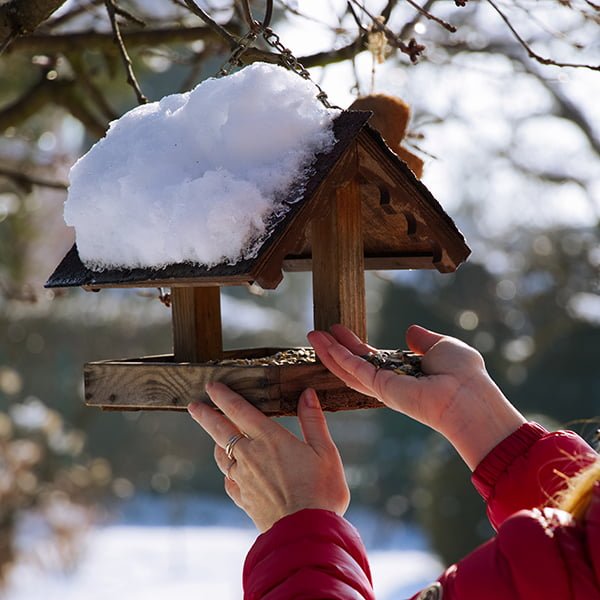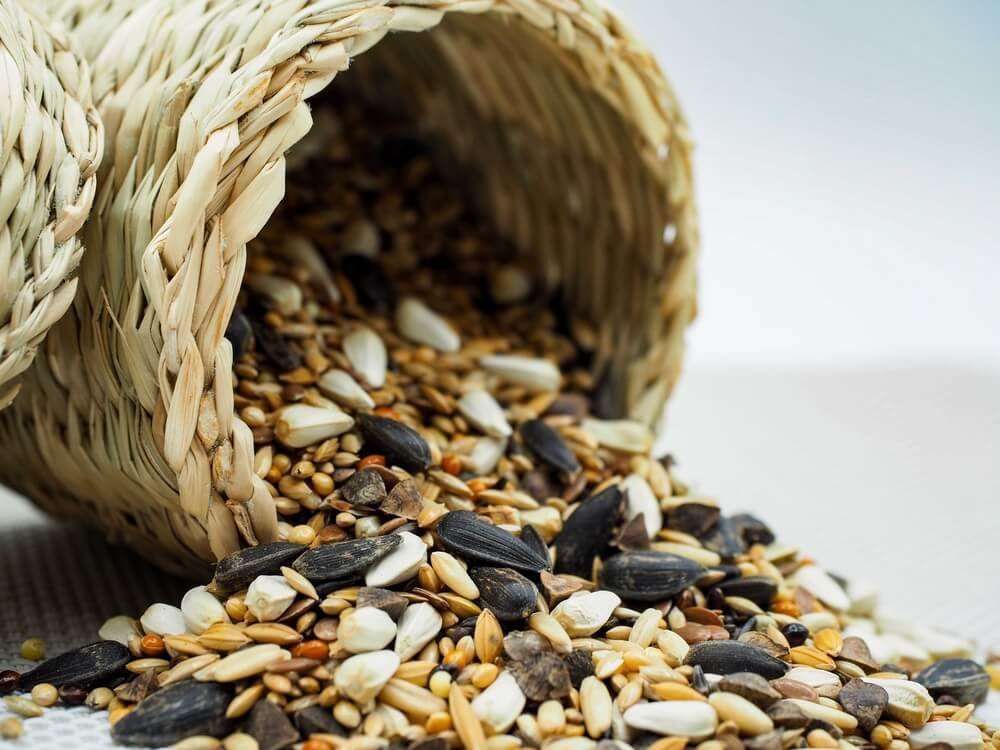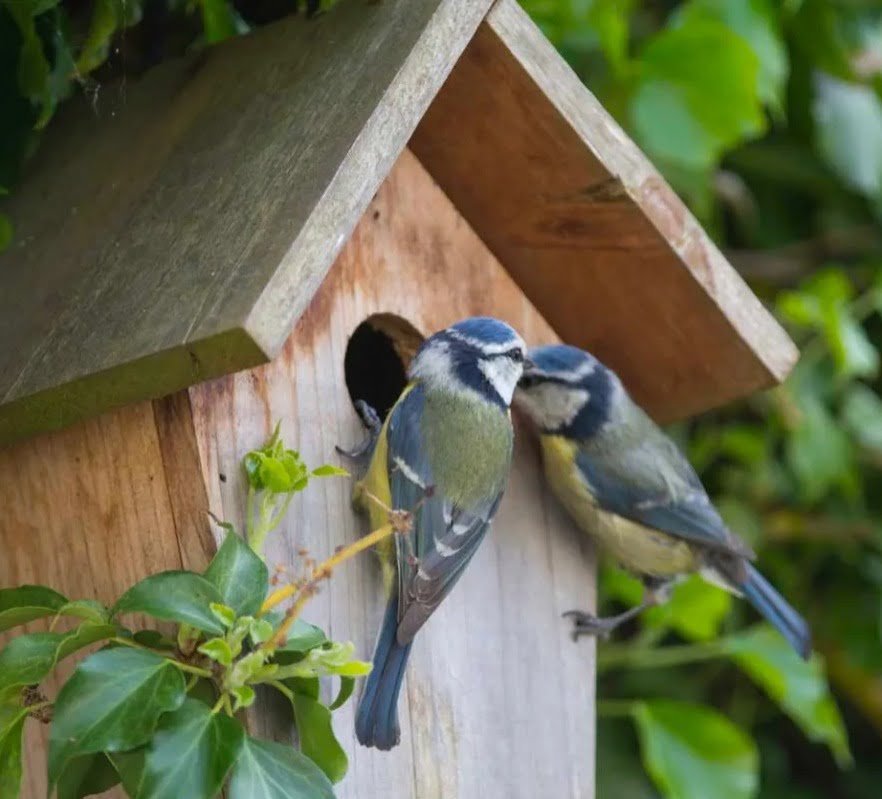Discover the best tips and practices for providing nourishing treats to our feathered companions during the harsh winter months. Learn about the essential foods, feeder maintenance, and strategies to create a welcoming oasis for birds, ensuring their survival and bringing joy to your backyard.
As the winter chill sets in, our backyard birds face the challenging task of finding sufficient food and shelter to sustain themselves through the harsh conditions. This is where we, as nature enthusiasts and bird lovers, can make a significant difference by providing them with the nourishment they need. Winter bird feeding not only supports their survival but also offers us the opportunity to enjoy their vibrant presence and delightful melodies right in our own backyards.
Understanding Winter Bird Feeding

Feeding birds during the winter months is more than just a kind gesture; it’s a vital lifeline for these resilient creatures. When natural food sources become scarce, birds rely heavily on supplemental feeding to maintain their energy levels and stay warm. By offering a reliable food source, we can help ensure their well-being and support the local bird population.
Benefits of Winter Bird Feeding

- Survival: Sufficient nutrition helps birds withstand the extreme cold and conserve energy.
- Migration: Well-nourished birds are better equipped to undertake their remarkable migratory journeys.
- Breeding: Proper nutrition in winter contributes to successful breeding seasons in the spring.
- Enjoyment: Bird watching becomes a more rewarding experience when our feathered friends frequent our feeders.
What to Feed Birds in Winter

When it comes to winter bird feeding, variety is key. Different species have unique dietary preferences and offering a diverse range of foods will attract a wider array of feathered visitors to your backyard. Here are some popular and nutritious options:
- Seeds: Black oil sunflower seeds, nyjer (thistle) seeds and millet are excellent choices for many seed-eating birds.
- Suet: High-energy suet cakes or suet logs provide essential fats and proteins for insulation and energy.
- Nuts: Unsalted peanuts, almonds and pecans offer a protein-rich treat for birds like jays, woodpeckers and nuthatches.
- Fruits: Fresh or dried fruits like raisins, oranges and apples provide essential carbohydrates and hydration.
- Mealworms: Live or dried mealworms are a favorite treat for many species, especially during the breeding season.
Feeder Maintenance and Placement
Proper feeder placement and maintenance are crucial for ensuring the safety and well-being of your feathered visitors. Follow these tips for a successful winter bird feeding experience:
- Feeder Placement: Position feeders in sheltered areas, away from strong winds and potential predators. Nearby trees or shrubs provide essential cover and perching spots.
- Feeder Cleanliness: Regularly clean feeders to prevent the buildup of mold, bacteria and old food, which can be harmful to birds.
- Fresh Food and Water: Replenish food and water regularly, especially during freezing temperatures when water sources may be limited.
- Feeder Variety: Offer different types of feeders, such as tube feeders, hopper feeders and suet feeders, to accommodate different species’ preferences.
- Squirrel-Proofing: Consider using squirrel-proof feeders or baffles to deter these acrobatic visitors from monopolizing the food supply.
Creating a Winter Bird Sanctuary

By thoughtfully designing your backyard space, you can create a welcoming oasis for birds during the winter months. Here are some additional tips to enhance their experience:
- Shelter: Provide roosting boxes, evergreen trees or brush piles for birds to seek shelter from harsh weather conditions.
- Water Sources: Install a heated bird bath or submersible heater to ensure a constant supply of fresh, unfrozen water.
- Native Plants: Incorporate native plants that produce berries, seeds or shelter, supporting birds’ natural habitats.
- Minimize Disturbances: Limit loud noises, bright lights and human activities near feeding areas to avoid disrupting their routines.
- Observe and Enjoy: Take the time to observe and appreciate the beauty of these incredible creatures, while also monitoring their feeding patterns and adjusting your offerings as needed.
Winter bird feeding is not only a rewarding activity but also a crucial act of kindness that supports the well-being and survival of our feathered friends during the harshest months of the year. By providing a diverse range of nutritious foods, maintaining clean and accessible feeders, and creating a welcoming backyard sanctuary, you can make a significant difference in the lives of these incredible creatures. Embrace the joy of nurturing our avian companions and witness the vibrant tapestry of life that unfolds right in your own backyard.
Pingback: 14 Flowers That Look Like Birds: Beauty in Nature’s Design
Pingback: Finches of Michigan: Exploring the Diverse Species
Pingback: Beautiful Trees That Start With ‘K’ - Gardener's School
Pingback: Strelitzia Nicolai: The Ultimate Guide to the Giant White Bird of Paradise